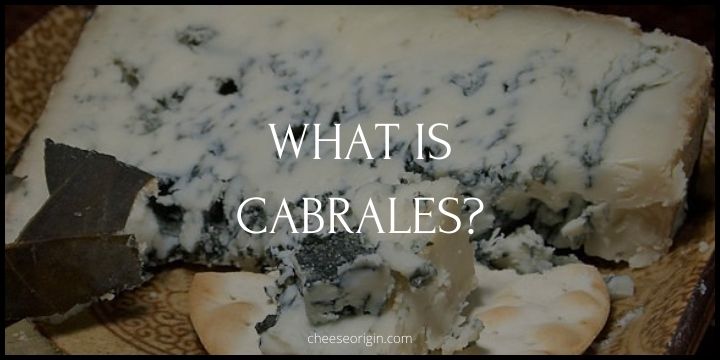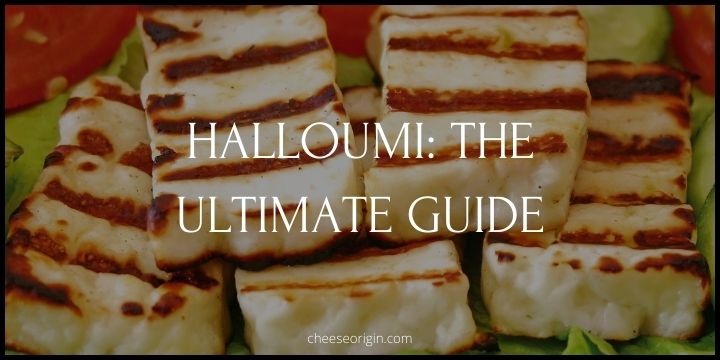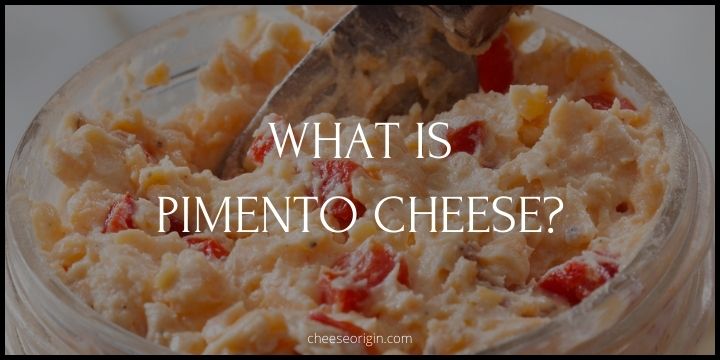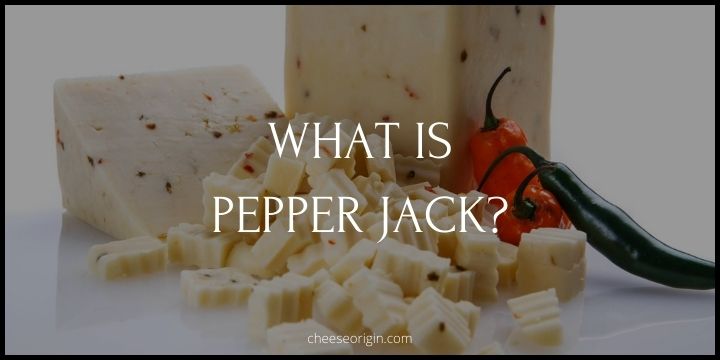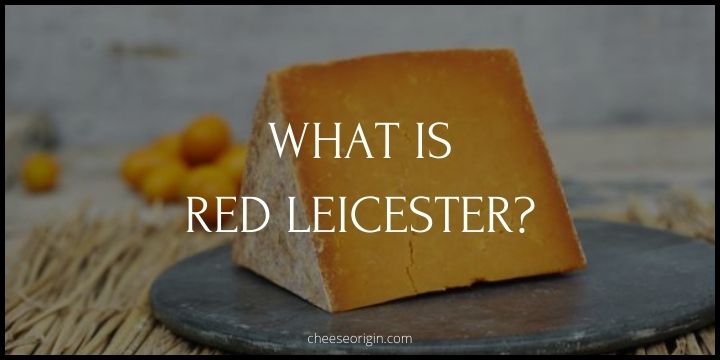What is Cheshire Cheese? A Timeless British Delight

Cheshire Cheese, a timeless British delight, is a testament to tradition and culinary artistry. Originating from the county of Cheshire in England, its history traces back centuries, making it one of the oldest recorded cheeses in the country.
This delightful dairy product boasts a crumbly texture and a unique flavor profile that dances between mild and salty with a hint of tanginess. With its versatility and distinctive taste, Cheshire Cheese has carved out a special place in the hearts (and plates) of cheese lovers around the world.
Quick Facts About Cheshire Cheese
| Quick Facts | Details |
|---|---|
| Origin | England |
| Oldest Known Cheese | Records dating back to Roman Britain |
| Cheese Type | Semi-hard |
| Milk Source | Cow’s milk |
| Color Varieties | White, Red (Annatto), Blue |
| Texture | Crumbly and dense |
| Taste | Mild to sharp, slightly salty |
| Aging Time | 2-6 months |
| Popular Uses | Sandwiches, cheese boards, cooking |
| Pairings | Ale, stout, and robust red wines |
| Famous Quote | “The moon is made of a green cheese,” referring to green Cheshire |
| Protected Status | Protected Designation of Origin (PDO) status in the UK |
| Production Regions | Cheshire and the neighboring counties of Denbighshire, Flintshire, Shropshire, and Staffordshire |
| Fat Content | Between 48% and 56% |
| Special Editions | Appleby’s Cheshire, the only Cheshire cheese made with raw milk |
| Historical Significance | Mentioned in the Domesday Book of 1086 |
What is Cheshire Cheese?
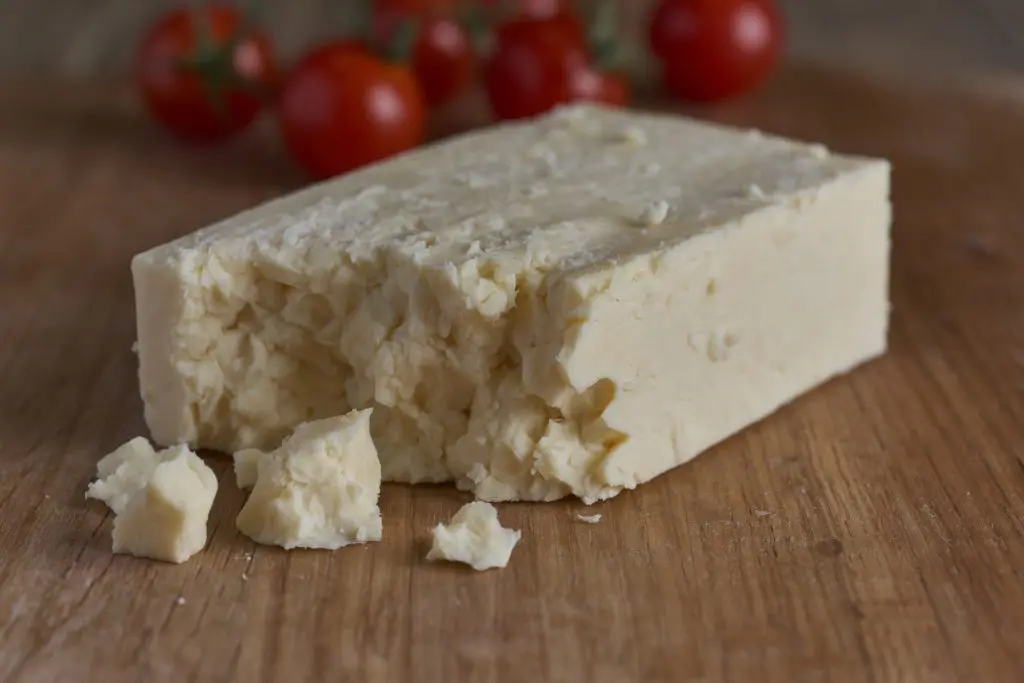
Cheshire Cheese, a true symbol of Britain’s culinary legacy, is one of the oldest known cheeses in the country. Its origins are said to date back to Roman times, making it a cheese with a history as rich and complex as its flavor profile. This semi-hard, crumbly cheese is crafted from cow’s milk and is recognized for its unique texture and taste that ranges from mild to sharp, with a slight salty tang.
There’s more to Cheshire Cheese than meets the eye. It comes in three color varieties – white, red, and blue. The white is the most common, while the red gets its hue from annatto, a natural food coloring. The blue variety, known as Blue Cheshire, is punctuated with veins of blue mold, giving it an entirely different flavor complexity.
Cheshire Cheese is aged for anywhere between 2 to 6 months. As it ages, its flavor deepens, growing more tangy and complex. This cheese shines on a cheese board, in sandwiches, or melted into a variety of dishes, lending its distinctive character to every bite. It pairs beautifully with ale, stout, and robust red wines, making it a versatile addition to your dining table.
It’s not just the taste that makes Cheshire Cheese special. It enjoys Protected Designation of Origin (PDO) status in the UK, which means that only cheese produced in Cheshire and the neighboring counties of Denbighshire, Flintshire, Shropshire, and Staffordshire can be officially called ‘Cheshire’.
One particularly special edition is Appleby’s Cheshire, the only Cheshire cheese made with raw milk today. This version of the cheese carries forward the traditional methods of cheese-making, keeping alive a taste that has been loved for centuries.
From its mention in the Domesday Book of 1086 to the famous quote “the moon is made of a green cheese” referring to green Cheshire, this cheese has woven itself into the fabric of British history and culture. Whether you’re a cheese connoisseur or a casual food lover, tasting Cheshire Cheese is like taking a bite straight out of Britain’s rich gastronomic past.
What Does Cheshire Cheese Taste Like?
Cheshire taste is mellow and slightly salty, with a moist and crumbly texture that sets it apart from other cheeses. The flavor can range from mild to sharp, depending on how long it has been aged.
The white Cheshire variety is the mildest, offering a clean, zesty tang and a slight hint of nuttiness. The red Cheshire, imbued with annatto for coloring, has a stronger and more robust flavor profile.
The blue Cheshire, laced with veins of blue mold, introduces an entirely different taste. It’s richer, deeper, and has a distinctive earthy, almost mushroom-like flavor.
Regardless of the variety, Cheshire Cheese is known for its creamy and slightly crumbly texture. It melts beautifully in the mouth, leaving a lingering aftertaste that invites you to take another bite. Whether enjoyed on its own, paired with a robust red wine, or incorporated into culinary creations, Cheshire Cheese offers a wonderfully complex taste experience.
Cheshire Cheese Tasting Notes
- Appearance: Semi-hard, crumbly texture, comes in white, red (colored with annatto), and blue varieties.
- Aroma: Fresh and clean, with a hint of earthiness in the blue variety.
- Taste: Mellow and slightly salty. Flavor ranges from mild to sharp depending on aging. Blue variety has an earthy, mushroom-like flavor.
- Texture: Creamy and crumbly, melts well in the mouth.
- Aftertaste: Lingering, invites you to take another bite.
- Pairings: Pairs well with ale, stout, and robust red wines. Also works well in sandwiches and melted into dishes.
- Maturity: Aged between 2 to 6 months. The flavor deepens as it ages.
- Special notes: Appleby’s Cheshire is a special variety made with raw milk.
What are the Different Types of Cheshire Cheese?
| Type | Description |
|---|---|
| White Cheshire | The original and most prevalent type. It’s characterized by a crumbly texture and a gentle, milky flavor. |
| Red Cheshire | Similar to the white variety but with annatto added for a distinct red-orange hue. The taste is slightly nuttier and more robust. |
| Blue Cheshire | This variant is pierced during maturation to encourage blue mold growth, resulting in a strong, tangy flavor and a creamier texture than other Cheshire cheeses. |
| Appleby’s Cheshire | A traditional, cloth-bound type made by the Appleby family. It’s known for its moist, crumbly texture and complex, tangy taste. |
| Oak Smoked Cheshire | This is White Cheshire that has been smoked over oak chips, giving it a unique smoky flavor. |
What is the Difference Between Cheshire Cheese and Cheddar?
| Feature | Cheshire Cheese | Cheddar Cheese |
|---|---|---|
| Origin | One of the oldest British cheeses, originating from the county of Cheshire | Originates from the village of Cheddar, Somerset, England |
| Texture | Dense, semi-hard, and defined by a moist, crumbly texture. Can be a bit drier than Cheddar | Hard and natural with a slightly crumbly texture. Less crumbly than Cheshire |
| Taste | Mild, salty taste. The flavor can range from mellow to sharp depending on aging | Known for its strong, sharp, and complex flavor that deepens with aging |
| Color | Comes in white, red (colored with annatto), and blue varieties | Typically pale yellow, but can also be white |
| Aging | Aged between 2 to 6 months | Typically aged between 9 to 24 months, but some varieties can be matured for up to 5 years |
| Special Varieties | Appleby’s Cheshire made with raw milk | Clothbound Cheddar, Smoked Cheddar |
How to Eat Cheshire Cheese?
- Cheese Board: Include Cheshire Cheese in your cheese board. Its crumbly texture and unique flavor profile make it stand out. Pair it with fresh fruits like apples, pears, or grapes for a refreshing contrast.
- Culinary Creations: Melt Cheshire Cheese into your favorite dishes. Its creamy texture makes it perfect for gratins, macaroni and cheese, or cheesy baked potatoes.
- Sandwich Star: Add slices of Cheshire Cheese to your sandwich. Its slightly salty flavor pairs well with ham, roast beef, or turkey.
- Soup Topper: Crumble Cheshire Cheese on top of your soup for added flavor and creaminess. It works particularly well with tomato-based or vegetable soups.
- Pairing with Drinks: Enjoy Cheshire Cheese with a glass of robust red wine, stout, or traditional British ale. The flavors complement each other perfectly.
- Savor Alone: Simply savor a slice of Cheshire Cheese on its own. Its complex flavor is enjoyable without any accompaniments.
- Dessert Companion: Try pairing Blue Cheshire with sweet accompaniments like honey, figs, or dark chocolate for a delightful dessert experience.
- Salad Addition: Crumble Cheshire cheese over your salad. It adds a nice salty and tangy bite to balance the freshness of the greens.
- Baking Ingredient: Use Cheshire Cheese in your baking. It can add a savory twist to scones, biscuits, or savory muffins.
What Pairs Well with Cheshire Cheese?
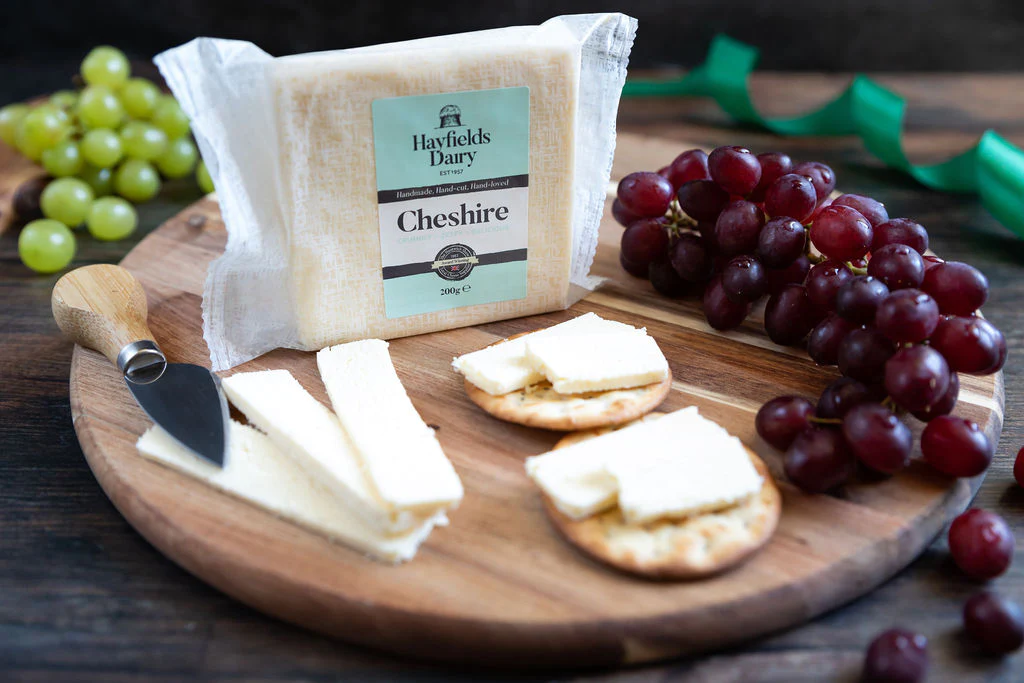
Food that goes well with Cheshire Cheese:
| Category | Food Pairing with Cheshire Cheese |
|---|---|
| Fruits | Apples, Pears, Grapes, Figs |
| Vegetables | Tomatoes, Pickles, Celery, Cucumbers |
| Breads and Crackers | Rye Bread, Sourdough, Water Crackers, Multi-grain Crackers |
| Meats | Ham, Roast Beef, Turkey, Salami |
| Condiments | Honey, Mustard, Chutney, Fig Jam |
| Nuts | Almonds, Walnuts, Pecans, Pistachios |
| Desserts | Dark Chocolate, Fruit Tarts, Apple Pie |
| Salads | Caesar Salad, Greek Salad, Spinach Salad |
| Cooked Dishes | Macaroni and Cheese, Gratin, Cheesy Baked Potatoes |
| Baked Goods | Cheese Scones, Savory Muffins, Cheese Biscuits |
Also read: What Fruit Goes on a Charcuterie Board?
Beverage that goes well with Cheshire Cheese:
| Category | Beverage Pairing with Cheshire Cheese |
|---|---|
| Wines | Robust Red Wines, White Wines, Port Wine |
| Beers | Stout, Traditional British Ale, Lager |
| Ciders | Dry Apple Cider, Pear Cider |
| Spirits | Whiskey, Brandy |
| Non-Alcoholic Drinks | Sparkling Water, Apple Juice, Grape Juice |
Also read: Top 10 Champagne & Cheese Pairings to Try at Least Once
Also read:
- What is Fromage Blanc? Unveiling France’s Creamy White Delight
- What is Saint Andre? A Decadent Delight from Normandy
- What is Blue Castello? The Creamy Danish Delight
- What is Danish Blue (Danablu)? Denmark’s Favorite Blue Cheese
- What is American Grana? Redefining Parmesan in the US
- What is Tilsit Cheese? An Age-Old Culinary Secret
- What is Maasdam? The Dutch Cheese with Swiss Roots

